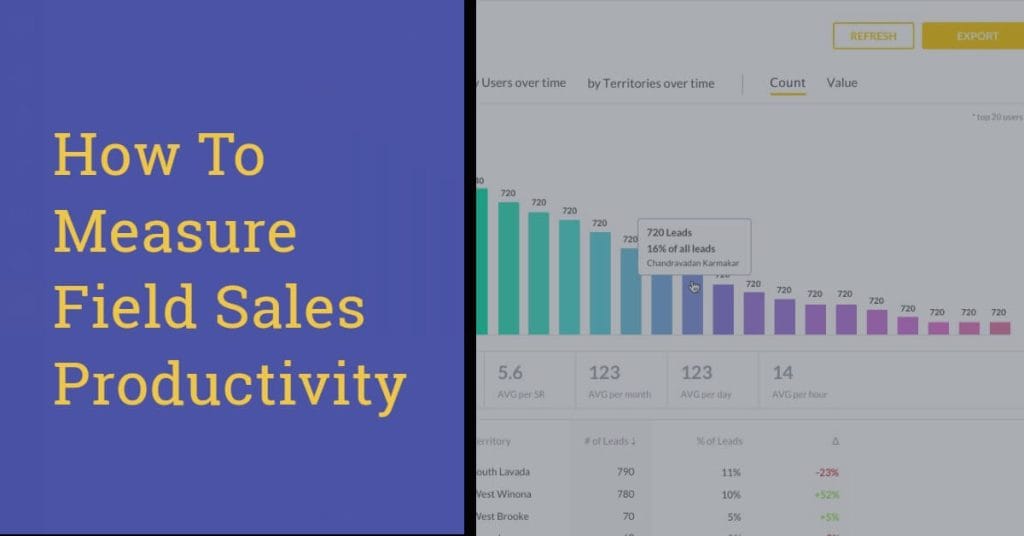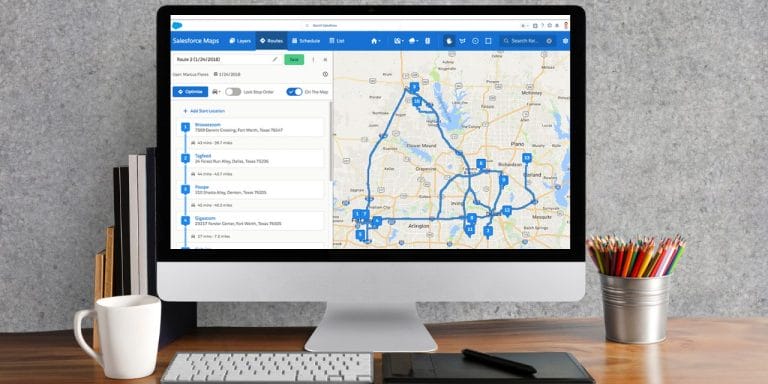According to LinkedIn, the average sales professional spends less than 30% of their time selling. Why? Simple: They’re completely bogged down by non-selling activities.
Fortunately, there are a few things you can do to remedy the situation. First and foremost, you can learn how to measure sales productivity. Doing so will help you identify where your reps waste the most time and substitute those activities for more effective ones.
So that’s what we’re going to talk about today. Keep reading to learn about the 14 sales productivity metrics you should monitor and the benefits of doing so. But first…
The Challenge Of Measuring Sales Productivity
Measuring sales productivity is essential, but it can be challenging.
This is because there’s so much data available to sales managers like yourself. To measure sales productivity effectively, you have to decide which data points matter and which don’t based on your company’s unique sales process. It takes a bit of trial and error.
The good news is you’ll eventually figure out which metrics deserve your attention. You just have to track them each long enough to judge their importance to your efforts.
With that in mind, let’s look at the most important sales productivity metrics out there right now. That way, you can decide which one you want to experiment with first.
How To Measure Sales Productivity: 14 Metrics To Track
Ready to measure your sales team’s productivity levels? Then track and evaluate these 14 metrics. Each will give you deeper insight into the efficiency of your department.
1. Number Of Completed Sales Activities
The only way to hit your department’s sales goals is to ensure every team member completes a predetermined number of sales activities. Said sales activities may include in-person visits, follow-up sales calls, emails and texts sent to existing customers, etc.
Track this metric to make sure your reps are putting in the effort to achieve success. Then evaluate it regularly to see how productive your reps are or are not.
Tools like SPOTIO, which includes a performance reporting suite, make this a breeze.
2. Number Of Leads Created
The sales activities your reps complete should produce tangible results. One such result will (hopefully!) be a stack of red-hot leads that your team can contact and sell to.
Generally speaking, the more leads your reps create daily, the more productive they’ll be. Just make sure they generate quality leads. A bunch of contacts that will never buy won’t benefit your company—even if your reps produce them incredibly efficiently.
3. Number Of Opportunities Created
What’s the difference between a lead and an opportunity? A lead is a person or company that could buy from you. An opportunity is a person or company that actually might.
It’s important to generate leads, of course. But if they don’t eventually turn into bonafide opportunities, it doesn’t really matter because you won’t make any sales.
To track the number of opportunities your reps create and how quickly they create them. This will help you understand how productive your lead-generation strategies are.
4. Opportunity Losses
It takes time to generate leads and turn them into opportunities. If these potential buyers don’t turn into paying customers, your reps will have spent a lot of effort for nothing. To boost sales productivity metrics, your reps need to minimize the number of times this happens.
To calculate the opportunity losses metric without a piece of software, simply divide your team’s total lost opportunities by the number of total opportunities generated, and multiply the result by 100. The figure you end up with should be expressed as a percentage.
For example, if you generate 100 opportunities and lose 20 of them, your opportunities lost rate would be 20% [(20 / 100) x 100 = 20)].
5. Opportunity Wins
Opportunity wins are the opposite of opportunity losses, which we just covered.
This metric helps sales teams understand how many opportunities become paying customers. It’s also expressed as a percentage. To calculate it, use a similar formula to the one above: divide your deals won by the number of opportunities pursued, then multiply the result by 100.
For example, if your team pursues 200 unique opportunities and converts 40 of them into paying customers, your opportunity win rate would be 20% [(40 / 200) x 100 = 20)].
The higher your opportunity win rate is, the more productive your sales team is likely to be.
6. Sales Close Rate
The close sales rate metric may seem like the same thing as the opportunity wins metric that we talked about above. But they’re actually a little different.
Whereas the opportunity wins metric measures the percentage of opportunities that your team converts into sales, the close sales rate measures the percentage of total leads that your team converts into closed deals. It’s another important KPI for sales productivity purposes.
Tracking sales close rates will help you understand why your reps perform the way they do. If they have a high opportunity win rate but an abysmal sales close rate, for example, you can probably assume that their lack of productivity has to do with poor quality leads. You can then adjust your buyer personas, lead gen strategy, etc., to fix this issue for your team.
Calculate your team’s sales close rate by dividing your total number of conversions by your total number of leads. Then multiply the resulting figure by 100.
For example, if your team generates 1,000 leads and converts 100 of them into paying customers, your sales close rate would be 10% [(100 / 1,000) x 100 = 10)].
7. Average Deal Size
Sometimes the easiest way to boost sales rep productivity is to chase bigger, better deals. That’s where the average deal size metric comes into play.
To calculate this KPI, divide the total value of deals won by the total number of deals won. For example, if your sales team generates $100,000 from 250 completed sales, your average deal size would be $400 (100,000 / 250 = 400).
Don’t let your reps waste time on tiny deals that don’t move the needle. Coach them to pursue more profitable ones that do. Any extra effort they expend will more than likely be worth it.
Just make sure that the big deals they pursue actually have a chance at closing. If they don’t, your team will become even more unproductive than it already is.
8. Sales Growth Rate
Growth can be measured over a variety of timeframes—week-over-week, month-over-month, year-over-year, etc. Annual growth is popular because it helps sales leaders understand how effective their sales strategies are. But the specific metric you track and measure is up to you.
To calculate the sales growth rate for your team, subtract your previous sales from your current sales. Then divide the result by your previous sales and multiply the figure by 100.
For example, if you made $8,000,000 last year and $10,000,000 this year, you’d have experienced 25% YOY growth because [(10,000,000 – 8,000,000) / 8,000,000] x 100 = 25.
Generally speaking, positive YOY growth is a good sign. It means your sales department is more productive than it was previously. Always aim for positive growth in this area.
9. Total Revenue
Hopefully, your sales team drives more revenue now than it did last month, last quarter, and last year. If it does, you and your reps might be more productive than you realize.
Of course, revenue and profit aren’t the same things. Make sure your company doesn’t spend more than it generates. This will make measuring sales productivity a real challenge.
For SaaS brands, total revenue is often expressed as annual recurring revenue (ARR) or monthly recurring revenue (MRR). Calculate these two metrics for your company by dividing total contract value by contract duration (in either months or years.)
10. Revenue By Territory
Overall revenue numbers are important. But if you manage a field sales team, a more detailed metric, such as revenue by territory, might be more useful to you. Why? Because it will help you determine which territories and/or reps are most productive and successful.
Image: Tracking leads created by territory in SPOTIO.
If you discover that Territory A produces 10 sales a week, for example, while Territory B only produces 5, you can dig deeper. What are your reps doing in Territory A to achieve better results? Can the same techniques be applied in Territory B to boost performance?
The revenue by territory metrics will help you determine sales team productivity levels—especially if you break it down by new customers, repeat business, etc.
11. Sales Cycle Length
How long does it take your team to close deals?
If you sell in the B2B space, the answer is probably, “Way longer than I want it to.” So, anytime you can cut back on sales cycle length, you should probably do it.
The most productive sales teams close deals quicker than average. This usually leads to more sales on a weekly, monthly, and yearly basis. More revenue, too.
Unproductive sales teams need help closing. Deals drag on and on, which is both tedious and resource-taxing. You need to find out why your team can’t close deals in a timely manner. Then implement new tactics and/or strategies to remedy this problem.
12. Sales Rep Quota Attainment
Do your sales reps meet quota?
If the answer is yes, dig deeper and find out how long it takes them. If the answer is no, dig even deeper and find out the percentage of quota they usually meet. Then ask why.
Why do your reps miss quota on a regular basis? Have you set unrealistic expectations for them? Is your sales strategy underperforming? Do your reps need more training? Perhaps they don’t understand how to connect with and sell to qualified prospects.
If you want to learn how to measure sales productivity, quota attainment is an important KPI.
13. Handle Time
The handle time metric refers to the amount of time it takes a rep to handle sales interactions.
How long does it take your sellers to respond to leads? To conduct sales calls? To follow up with potential customers via email? In general, the faster they do these things, the better.
Cutting handle time will allow your sales reps to become more efficient and deal with more prospects every day. This typically leads to more sales, revenue, and success.
14. Lead Response Time
Finally, we have the lead response time metric.
How long does it take your reps to follow up with new leads? Research shows that the faster your reps follow up, the more sales they’ll make. In fact, conversion rates are 8x higher when reps respond to new leads within five minutes, as opposed to just one minute later.
If you feel that your sales team is unproductive, coach them to respond to prospects as quickly as possible. This one thing could completely revolutionize your sales process.
What Are The Benefits Of Measuring Sales Productivity?
Now that we know which metrics to measure let’s talk about why you should.
There are five main reasons related to revenue, financial loss, employee satisfaction, performance issues, and company growth. Let’s take a closer look at each of them:
Increase Revenue
This is one of the most obvious reasons why you should measure sales productivity. The more your reps get done on a daily basis, the more revenue they’re likely to drive for your company. Think about it: if your reps generate $40 per sales call, for example, and make 25 sales calls a day, they’ll generate an average of $1,000. If they’re able to make 50 calls a day without changing their process, though, they’ll make $2,000. It’s simple math.
Prevent Financial Loss
Boosting company revenue is important. So is minimizing financial loss. The right sales productivity metrics can help you accomplish this, too. For example, you may find that your reps aren’t using your CRM software productively. Maybe they’re only using half of its features. This means that your company is losing half of the money it spends on this tool.
Enhance Employee Satisfaction
Your sales reps want to do well. If they feel like they’re a burden to your company, they won’t enjoy coming to work every day, and their job satisfaction levels will plummet. By helping them get more done in less time, you’ll enable them to feel like essential cogs in your company’s overall success. This will give them a sense of purpose and increase their happiness. Don’t be surprised if your retention numbers go up when you measure sales productivity.
Identify Performance Issues
Tracking sales productivity metrics will also help you pinpoint issues. Have you properly trained your reps? Have you given them the resources they need to close deals at a consistent clip? Measuring sales productivity will help you answer these questions. How? You’ll know if poor performance is due to a lack of time, poor training, or something else.
Plan For Growth
Once you have a grip on your sales reps’ performance, you can plan for the future. How many new employees should you hire to meet company goals? And how much revenue should each of them bring in once they’re familiar with your sales strategy? You need to know. If you learn how to measure sales productivity effectively, the answers will become clear.
Ready To Boost Sales Productivity With SPOTIO?
Congratulations, you know which sales productivity metrics to track. Now, you’re probably wondering, “How do I improve my reps’ performance in these specific areas?”
One of the easiest ways to do it is to invest in the right software solutions.
If you manage a field sales team, the right solution is probably SPOTIO. Why? Because our platform was specifically designed to streamline your processes and make them more effective. In fact, teams that use our solution boost productivity by an incredible 46%.
Become a SPOTIO user and get instant access to lead generation, task automation, route planning, territory management, multichannel communication, workflow sequencing, and custom reporting tools your reps can use to get more done in less time.
Sign up for a free demo to glimpse our industry-leading platform in action. We’re confident you’ll love the productivity-boosting features you’ll see!




